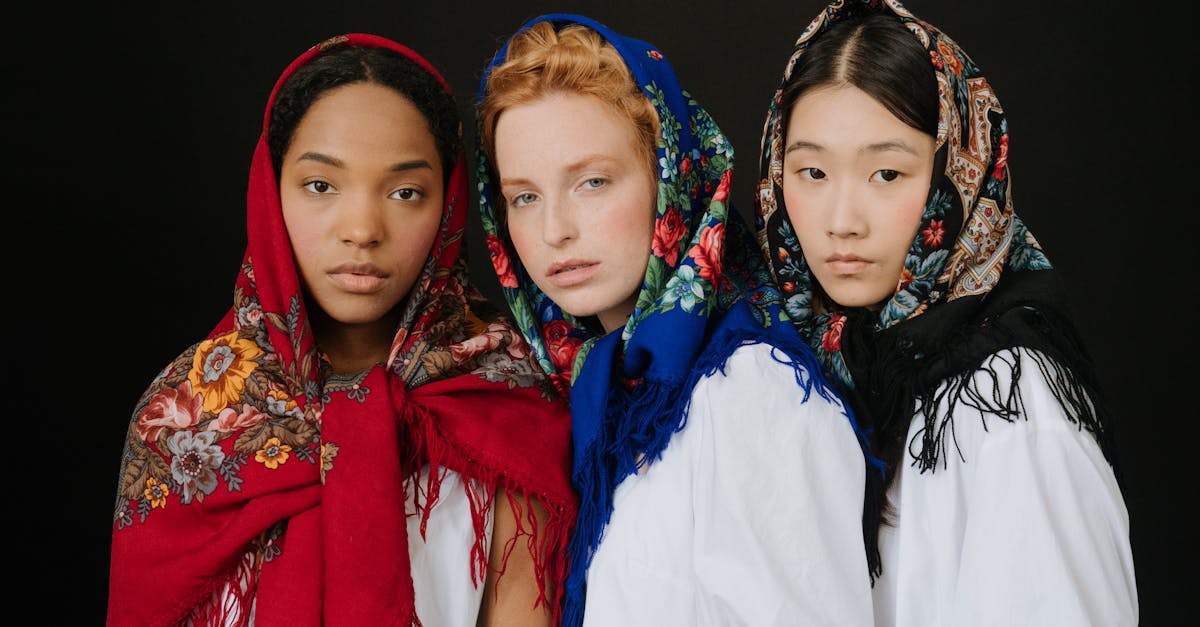Discover the untapped cultural richness of South America in ways you never imagined. Is South America’s culture more diverse than you think? Let’s delve into the fascinating depths of this vibrant continent.
Exploring the Rich History of South America

South America boasts a captivating tapestry of history, blending ancient civilizations, colonial influences, and vibrant indigenous cultures. From the majestic Andes mountains to the lush Amazon rainforest, the continent’s historical richness offers a glimpse into a diverse and intriguing past.
ancient civilizations and indigenous heritage
– The ancient American art displayed in The Michael C. Rockefeller Wing highlights the creativity and cultural sophistication of pre-Columbian societies.
– A new understanding of the first peoples in the Americas is emerging, shedding light on their resilience and contributions to world history.
– The encounter between Native Americans and Polynesians around 1200 A.D. showcases the interconnectedness of ancient cultures across the Pacific.
colonial legacies and exploration
– Sir Walter Raleigh, a key figure in the history of exploration, left a lasting impact on South America through his expeditions and encounters with indigenous populations.
– The history of the Amazon and its peoples, as explored by John Hemming, offers insights into the region’s past and the challenges faced by indigenous communities.
– Historic towns in West Virginia and Minnesota provide a glimpse into the colonial history of the United States and its ties to South America.
diverse destinations for history buffs
1. Cusco, Peru: Explore the Inca ruins of Machu Picchu and the colonial architecture of this historic city.
2. Cartagena, Colombia: Discover the well-preserved colonial old town and its historical significance as a key port.
3. Santiago, Chile: Visit museums and landmarks that trace the city’s colonial past and independence movements.
4. Salvador, Brazil: Immerse yourself in Afro-Brazilian culture and explore the city’s rich history.
Whether delving into the mysteries of ancient civilizations or tracing the footsteps of colonial explorers, South America offers a treasure trove of historical wonders waiting to be explored. The continent’s rich history continues to enthrall and inspire travelers seeking to uncover the secrets of its past.
The Influences of Indigenous Cultures

Indigenous cultures around the world have long been sources of inspiration, innovation, and wisdom. Their unique practices, beliefs, and traditions have shaped societies and continue to influence various aspects of modern life.
preservation of traditions
Indigenous cultures play a vital role in preserving ancient traditions that are passed down from generation to generation. Through oral storytelling, art, dance, and music, indigenous communities keep their history and customs alive. These traditions not only provide a sense of identity and pride but also offer valuable insights into sustainable living and harmonious relationships with nature.
artistic expressions
One significant influence of indigenous cultures can be seen in the realm of artistic expressions. Indigenous art, with its vibrant colors, intricate designs, and symbols, has inspired artists around the world. From traditional crafts to contemporary art forms, indigenous motifs and techniques continue to influence fashion, design, and visual arts.
environmental stewardship
Many indigenous cultures have a deep connection to the land and natural resources. Their traditional knowledge of sustainable practices and conservation efforts can offer valuable lessons in environmental stewardship. By honoring their relationship with the earth and promoting eco-friendly practices, indigenous communities showcase alternative ways of living in harmony with nature.
social justice advocacy
In addition to cultural influences, indigenous cultures are also at the forefront of social justice advocacy. Indigenous activists use their voices to raise awareness about issues such as land rights, cultural appropriation, and systemic injustices. Through music, art, and social media, indigenous individuals challenge stereotypes, combat racism, and promote understanding and respect for their communities.
spiritual wisdom
One of the most profound influences of indigenous cultures lies in their spiritual wisdom. Indigenous belief systems often revolve around connection to the land, ancestors, and spirits. Their spiritual practices emphasize respect for all living beings and the interconnectedness of life. Such teachings offer valuable lessons in mindfulness, compassion, and holistic well-being.
In conclusion, the influences of indigenous cultures are vast and multifaceted, touching upon various aspects of human society. By honoring and learning from indigenous traditions, we not only gain a deeper appreciation for cultural diversity but also pave the way for a more interconnected and sustainable future.
The Impact of Colonialism

Colonialism has left a profound mark on the cultures of regions affected by external dominance. Racism and discrimination are among the enduring legacies of colonialism, perpetuating inequalities and shaping societal norms. The repercussions of colonial rule are still felt in various aspects of life, especially in former colonies where historical wounds continue to influence cultural dynamics.
the lingering effects of colonial borders
One significant consequence of colonialism is the arbitrary drawing of borders, disregarding existing cultural, tribal, or ethnic boundaries. The demographic effects of colonialism are evident in regions like the Middle East and North Africa, where artificial divisions have led to ethnic tensions and political instability.
List of effects of colonial borders:
- Fragmentation of cultural identity
- Creation of artificial ethnic divides
- Entrenchment of tribal conflicts
the cultural restraints imposed by colonial powers
Colonial rule often imposed restrictions on indigenous cultural practices, languages, and beliefs, aiming to assert dominance and control. In countries like India, the impact of England on India’s culture is widespread, influencing everything from language to cuisine.
cultural resilience and adaptation
Despite the negative impacts of colonialism, many cultures have displayed resilience and adaptability in the face of external pressures. In Australia, Aboriginal Australians are still grappling with the effects of a colonial past but have also exhibited remarkable strength in preserving their traditions and advocating for cultural recognition.
shaping gender and sexual identities
Colonialism has not only influenced cultural practices but also shaped gender and sexual identities in colonized societies. The Two-Spirit and LGBTQ+ identities in Indigenous communities reflect a complex interplay between colonial impositions and indigenous traditions.
preserving cultural heritage post-colonialism
Efforts to reclaim and preserve cultural heritage post-colonialism are essential in fostering a sense of identity and pride. Algerian literature, for example, has transformed from a reflection of colonial oppression to a celebration of cultural resilience and resistance.
While the impacts of colonialism on culture are profound and enduring, they have also sparked movements of cultural revitalization and decolonization, striving to reclaim and honor the diverse heritage of societies affected by historical subjugation.
Modern-Day Cultural Fusion

As our world becomes increasingly interconnected, cultural fusion has become a defining characteristic of our modern society. This blending of traditions, art forms, cuisines, and lifestyles from different parts of the globe has given rise to a rich tapestry of diversity and creativity. Let’s explore some fascinating examples of modern-day cultural fusion that illuminate the beauty of this phenomenon.
Elvis Presley: A Trailblazer in Cultural Fusion
Elvis Presley, often referred to as the “King of Rock and Roll,” revolutionized the music industry in numerous ways. From his iconic music that seamlessly blended rhythm and blues, country, and gospel, to his energetic stage performances that incorporated elements of African American music and dance, Elvis showcased the power of cultural fusion in music. His influence continues to reverberate through generations of musicians, highlighting the universal appeal of blending diverse musical traditions.
The ‘Igbalode’ Bridal Collection: Modernizing Tradition
- The ‘Igbalode’ Bridal Collection represents a stunning example of how tradition and modernity can harmoniously coexist. This collection infuses traditional bridal fashion with a contemporary flair, celebrating the beauty of Nigeria’s cultural heritage while embracing modern design aesthetics.
Culinary Evolution: A Timeless Blend of Flavors
Exploring the culinary history of Britain spanning thousands of years reveals a fascinating journey of cultural fusion. From ancient recipes dating back to 4,000 BC to the modern gastronomic landscape of today, British cuisine has evolved through the influence of diverse cultures, creating a delicious tapestry of flavors that reflect the country’s rich history of immigration and trade.
Brazil’s ‘Capital of Happiness’
Unveiling the essence of Brazil’s unsung ‘capital of happiness’ showcases a vibrant fusion of cultures that defines the city’s unique charm. From samba rhythms echoing through the streets to diverse architectural styles adorning the skyline, this Brazilian city encapsulates the spirit of cultural fusion in its purest form.
Corsica: A Cultural Mosaic in the Mediterranean
- Corsica, the Mediterranean’s most mountainous isle, is a melting pot of cultures that have shaped its identity over centuries. The fusion of French and Italian influences, combined with its rich history of diverse settlements, has created a unique cultural mosaic that captivates visitors with its enchanting blend of traditions.
In conclusion, modern-day cultural fusion serves as a testament to the beauty of diversity and the boundless creativity that arises when different cultures come together. It is a celebration of shared roots, shared experiences, and a shared future that embraces the richness of our collective heritage.
Celebrating Diversity in South America’s Arts and Literature

South America is a vibrant and diverse continent, known for its rich cultural heritage and artistic expression. From colorful street art to poignant literature, the region’s creativity reflects the myriad of traditions, histories, and perspectives that shape its identity. In this article, we will explore how South American arts and literature celebrate this diversity, offering a unique glimpse into the soul of the continent.
fusion of cultures in artistic expression
South American arts are a beautiful tapestry woven from the threads of various cultures that have converged in the region over centuries. From the indigenous peoples who have inhabited the land since time immemorial to the waves of European, African, and Asian immigrants who have made South America their home, the continent’s artistic expression is a celebration of this fusion of cultures.
– LatinArte: A Latin American Arts Showcase in Montréal highlights the contemporary art scene in South America, showcasing the innovative works of artists who draw inspiration from their diverse cultural backgrounds.
– The Smithsonian’s National Museum of Asian Art recognizes and celebrates the contributions of Asian Pacific American artists to the rich tapestry of South American arts and culture.
literary voices of diversity
South American literature is equally diverse, offering a kaleidoscope of voices that reflect the region’s complex history and cultural nuances. From magical realism to social commentary, South American authors use their craft to explore identity, tradition, and the human experience in all its complexities.
– ULM’s Black History Month Program features literary events that showcase the works of black authors from South America, highlighting their unique perspectives and contributions to the literary landscape.
– “Beautiful Books Celebrating Black Art and Design” offers a curated selection of literature that delves into the intersection of art, culture, and identity in South America.
inspiring cultural exchange through art and literature
Art and literature serve as powerful vehicles for cultural exchange, allowing South American artists and writers to share their stories with the world and engage in dialogue that transcends borders. By celebrating diversity in their creative works, they invite audiences to immerse themselves in the rich tapestry of South American culture.
– GOPI DAIRY Diwali at Times Square embodies the spirit of diversity, equity, and inclusion through a colorful celebration of South American art and culture.
– UVU’s Black History Month Celebration provides a platform for sharing the diverse voices and narratives of South American literature, fostering cross-cultural understanding and appreciation.
embracing a colorful literary landscape
As readers delve into the world of South American literature, they are invited to explore a vibrant and multifaceted literary landscape that reflects the region’s rich cultural diversity. From the evocative prose of Gabriel Garcia Marquez to the bold poetry of Alfonsina Storni, South American literature offers a treasure trove of literary gems waiting to be discovered.
– “5 African-American Artists Who Inspire My Students’ Creativity” showcases the cross-cultural influence of South American art on global artistic movements.
– “New Colors on the Block” introduces emerging South American authors who are reshaping the literary landscape with their fresh perspectives and innovative storytelling.
In conclusion, South America’s arts and literature are a testament to the beauty of diversity and the power of storytelling to transcend boundaries. By celebrating the myriad voices and cultural traditions that define the region, South American artists and writers enrich our global cultural tapestry and inspire us to embrace the richness of human experience in all its forms.
